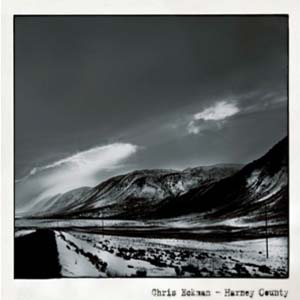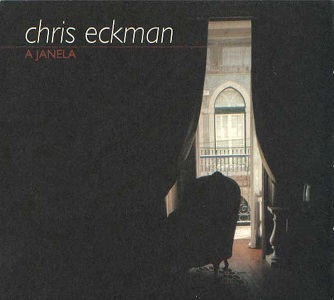|
Warenkorb / Shopping Cart:
Artikel 0,00 €      |

|
|
Suche / Search
|
|
STOPPOK |
|
VORVERKAUF |
|
# |
|
# |
|
|
|
Keep an eye on...
DAMAGED GOODS |
|
ON THE DEcKS |
|
ON THE DECKS |
|
OBS 28 |
|
WIEDER DA! |
|
|
|
----- |
|
SUPER SAMPLER |
|
50s/60s R'n'B |
|
|
|
|
|
GESCHENK |
|
|
|
|
|
|
|
|
|
|

|
|
||||||||||||||||
reissue auf weißem Vinyl.
Vor etwas mehr als zwanzig Jahren war ich das erste Mal in Harney County, nachdem ich die Memoiren des Schriftstellers William Kittredge gelesen hatte. Das Buch heißt "Owning It All" und es war für mich ein sehr einflussreiches Werk. Während Kittredge die Breitwand-Landschaft dieses Wüsten-Countys im südöstlichen Oregon feiert, kritisiert er gleichzeitig den rücksichtslosen Verbrauch der Landschaft durch mehrere Generationen Viehzucht seiner Familie. Es ist eine tragische und zur Vorsicht mahnende Geschichte, die uns daran erinnert, dass das Land, von dem wir denken dass es uns gehört, sich gegen uns wenden kann. Wir alle sind den Kräften der Natur ausgeliefert, mehr als wir zugeben wollen. Es ist ein Buch über gescheiterte Träume an einem Ort rauer Schönheit. Als ich es zu Ende gelesen hatte, wusste ich, dass ich dieses Land mit eigenen Augen sehen musste, über das Kittredge so schonungslos geschrieben hatte. Es wurde eine Art Zwang, und seitdem bin ich viele Male dorthin gereist. Nach der Rückkehr von dieser ersten Reise schrieb ich einen Song namens "Death At Low Water", der auf dem Chris & Carla-Album "Life Full Of Holes“ landete. Der Song schien mir inspiriert durch die Landschaft und die staubigen Städte, die ich gerade besucht hatte. Die Texte rufen Sehenswürdigkeiten in und um Harney County in Erinnerung, wie Steens Mountain und Denio, die südliche Grenzstadt in Nevada. Es ist ein irgendwie brutaler Song, aber es ist auch ein Lied über Glauben, Familie und das Festhalten an den wirklich wichtigen Dingen. Schon damals dachte ich, ich sollte eines Tages eine Sammlung von Harney County-Songs schreiben und singen. Mit diesem neuen Album bin ich endlich dazu gekommen, genau das zu tun. Die meisten der Songs auf diesem Album wurden lebendig, als ich an den Sounds und Texten des letzten Walkabouts-Albums „Travels In The Dustland“ feilte. Sie haben in gewisser Weise dieselben Wurzeln wie die „Dustland“-Songs, gehörten aber in einen anderen Zusammenhang. Sie handeln weniger von musikalischen Gesten als davon, was tatsächlich gesungen wird. Die Songs für "Travels In The Dustland" waren ebenfalls Wüsten-Songs, sie handelten aber von abstrakten und mythischen Landschaften. Hier sind die Ereignisse und Charaktere zwar erdacht, die Orte aber umso realer, ebenso wie die Straßen, auf denen ich selbst gefahren bin. Ich habe die Anstiege und Biegungen dieser Straßen in bester Erinnerung. Ich kann Steens Mountain in der Ferne hoch über dem Alvord Desert sehen, wie auch die verstreuten Trailer-Parks und Ranches. Diese spezifischen Landschaftserinnerungen sind die Ursprünge dieser Musik und der Grund, warum ich das Album "Harney County" genannt habe. Die großen Beifuß-Steppen, die windigen Berge und sumpfigen Ebenen (wo manchmal riesige Vogelschwärme beobachtet werden können) des Countys sind Orte, wo Menschen klein und oft bedeutungslos wirken. Die Winter sind lang und das Land versinkt unter Massen von Schnee, während im restlichen Jahr die Sonne gnadenlos brennt. Diese erbarmungslosen Elemente werfen einen langen Schatten auf die Charaktere in den Songs. Sie kämpfen darum, ihr Bestes zu tun – in einer Gegend, wo Schönheit und Mühsal einander begleiten. Ich wollte bei den Aufnahmen zu diesem Album ein Gefühl von Rohheit und Zurückhaltung. Mir schienen diese Qualitäten bereits in den Songs zu liegen, die Musik sollte dies reflektieren. Kontrabassist Žiga Golob und ich spielten die Songs zwei Tage lang live ein, in einem weitläufigen, verhallten Studio am Stadtrand von Prag. Der Aufnahmeraum bietet Platz für ein 80-köpfiges Orchester, und da standen wir beide uns nun gegenüber, winzig und von der Umgebung auch ein wenig eingeschüchtert. Angesichts der Songinhalte fühlte sich das durchaus passend an. Žiga gab den wesentlichen Anstoß zu diesen Aufnahmen, und ich hätte das Album nicht ohne ihn machen können. Milan Cimfe stieß als Toningenieur und auch als Gelegenheitsschlagzeuger zu uns. Meine Frau Anda sang Backing Vocals bei zwei Songs, Paul Austin spielte E-Gitarre bei "The Carnival Smoke", und mein alter Freund Terry Lee Hale spielte die verfremdete Mundharmonika von "Many Moons". Ursprünglich dachte ich, dieses Album sollte wie "Nebraska" als Dub-Album klingen. Das haben wir dann nicht ganz erreicht, ich möchte aber doch meinen, dass kleine Reste jener Idee bleiben. Was bei dieser Musik weggelassen wurde, ist wohl wichtiger, als das, was hinzugefügt wurde. Es gibt für die Geschichten also reichlich Raum zum Atmen. Und jetzt, wo das Album fertig ist, kann ich den nächsten Ort meiner Obsessionen finden. - Chris Eckman/Ljubljana/Sept. 2013
Herstellerinformationen
Glitterhouse Records GmbH
Schlachthofstr. 36a
21079 Hamburg
Deutschland
www.glitterhouse.com
I ventured to Harney County for the first time, 20 or more years ago, after I had read a memoir by the writer William Kittredge. The book is called “Owning It All” and for me it was a deeply affecting work. Throughout it Kittredge celebrates the hardscrabble, wide-screen landscape of this Southeastern Oregon desert county where he was raised, while at the same time he atones for and criticizes the devastation several generations of his ranching family unleashed upon that land. It is a tragic and cautionary tale that reminds us that the land we think we own can turn back on us, and that we are all more vulnerable and connected to the forces of nature than we care to admit. It is a book about failed dreams in a place of raw beauty. When I finished reading it I knew I had to see with my own eyes the country Kittredge had written about so unsparingly. It became a compulsion of sorts and since then I have traveled there many times.
After returning from that first trip (a long story in itself), I quickly wrote a song called “Death At Low Water” which ended up on the Chris and Carla album “Life Full Of Holes”. The song seemed gifted to me by the landscape and the dusty towns I had just visited and the lyrics call out landmarks in and around Harney County, namely Steens Mountain and Denio, the border town in Nevada, just to the south. It is a somewhat brutal song but it is also a song about faith and family and holding tight to the things that hold us together.
Even back then, I thought I should someday write and sing a collection of Harney County songs. With this new album I finally got around to doing just that. Most of the songs on this album came alive when I was fashioning the sounds and words for the last Walkabouts record “Travels in the Dustland”. They are in some ways of a piece with the “Dustland” songs, but even then I knew they needed to be in a different pile. They are less about musical gestures and more about what is being sung. And while the songs for “Travels in the Dustland” were also desert songs, their landscapes were abstract and mythical. Here the events and characters are imagined but the places are real and the roads are ones I have driven myself. I can see in my minds eye where these roads rise and where they bend. I can see Steens Mountain in the distance brooding high above the Alvord desert and the scattered trailer homes and white-board ranches. These specific landscape memories are the foundations of this music and the reason why I’ve called the album “Harney County”.
The county’s vast sagebrush drylands, windy mountains and marshy flats (where thousands of flocking birds can sometimes be seen) are places where humans are small and often ineffectual. The snow is heavy in the winter and the sun is harsh for the rest of the year. These unforgiving elements cast a long shadow upon the characters in these songs. They fight to do their best in a region where beauty and hardship seem to come in equal measure.
I wanted a sense of both rawness and restraint in the recordings for this album. I felt those qualities were already imbedded in the songs and that the musical performances should also reflect them. The upright bass player Žiga Golob and I played the songs live and unadorned for two days in a sprawling, reverberant studio on the outskirts of Prague. The room can hold an 80-piece orchestra and there we were, just the two of us face-to-face in the middle of the floor, dwarfed and a bit awed by our surroundings. Given the subject matter of the songs, this somehow felt correct. Žiga brought the essential pulse and dialogue to these performances and I couldn’t have done this record without him.
Milan Cimfe joined us as both the recording engineer and as our occasional drummer. My wife Anda sang backing vocals on two songs, Paul Austin added electric guitar to “The Carnival Smoke” and my old friend Terry Lee Hale played distorted harmonica on “Many Moons.”
I originally imagined this record sounding like “Nebraska” if it had been a Dub album. We didn’t quite end in that place but I would guess that small remnants of that idea remain. What has been left out of this music is arguably more important than what has been added to it. The space is there so that the stories have ample room to breathe. And finally, now that the album is done, I think I can move on and find a new place about which to obsess.
- Chris Eckman/Ljubljana/Sept. 2013
| 1. Nothing Left To Hate< |
| >2. The Carnival Smoke< |
| >3. Requiem For The Old Skool Heavy< |
| >4. Katy Cruel< |
| >5. Sound Of No Return< |
| >6. Many Moons< |
| >7. Rock Springs< |
| >8. Ghosts Along The Border |

Chris EckmanCD Harney County
15,75 €
|

Chris EckmanCD A Janela
6,00 €
|

